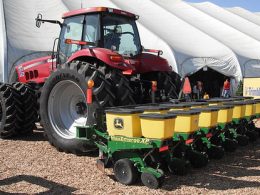Lightweeding technology has revolutionized farming practices in the Far East, enabling farmers to cultivate crops more efficiently and sustainably. This innovative approach has been adopted by many farmers in the region, who are now reaping the benefits of increased yields and reduced labor costs.
According to a recent report, the use of lightweeding technology has increased crop yields by up to 20% in some areas, while reducing labor costs by as much as 30%. This is due to the fact that lightweeding allows farmers to weed their crops more quickly and efficiently, without the need for manual labor.
One of the key benefits of lightweeding is its ability to reduce the use of herbicides and other chemicals in farming. This is because the technology uses a combination of light and heat to kill weeds, rather than relying on chemical pesticides.
Another benefit of lightweeding is its ability to improve soil health. By reducing the need for herbicides and other chemicals, farmers can reduce the amount of toxins that are introduced into the soil. This can help to improve soil fertility and structure, leading to healthier crops and better yields.
As one farmer in the region noted, ‘Lightweeding has been a game-changer for our farm. We’ve seen a significant increase in yields and a reduction in labor costs, and we’re proud to be part of the sustainable farming movement.’
In addition to its environmental benefits, lightweeding technology has also been shown to improve crop quality. By reducing the amount of weeds that are present in the field, farmers can produce higher-quality crops that are more appealing to consumers.
Overall, the adoption of lightweeding technology in the Far East is a significant step forward for sustainable farming practices. By reducing the use of herbicides and other chemicals, improving soil health, and improving crop quality, farmers in the region are able to produce high-quality crops while minimizing their environmental impact.
As the demand for sustainable and environmentally-friendly farming practices continues to grow, it’s likely that lightweeding technology will play an increasingly important role in the future of agriculture.
With its ability to reduce labor costs, improve crop yields, and improve soil health, lightweeding technology is an attractive option for farmers looking to adopt more sustainable farming practices.
In conclusion, the adoption of lightweeding technology in the Far East is a significant step forward for sustainable farming practices. By reducing the use of herbicides and other chemicals, improving soil health, and improving crop quality, farmers in the region are able to produce high-quality crops while minimizing their environmental impact.









